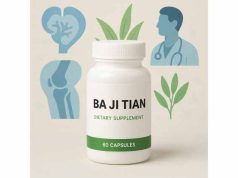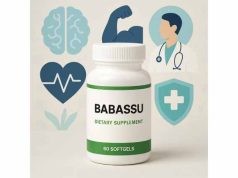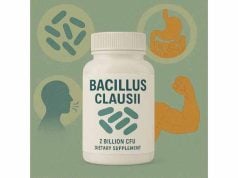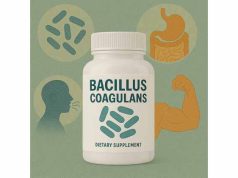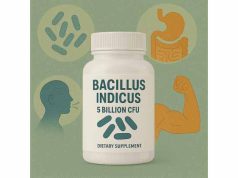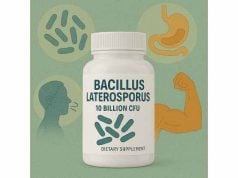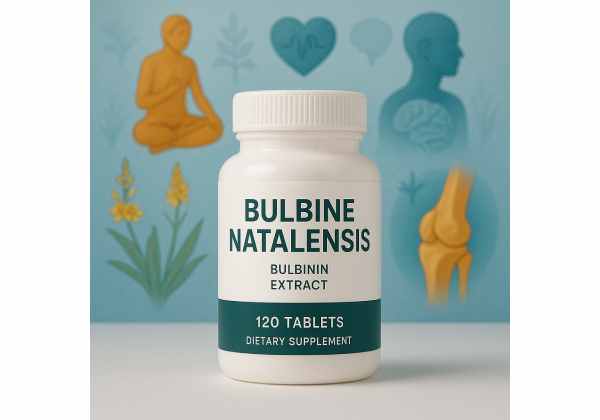
Bulbine Natalensis is a traditional South African herb that’s rapidly gaining attention worldwide as a natural supplement for testosterone support, muscle growth, libido enhancement, and general vitality. Known locally as “ibulbinye” and used in Zulu medicine for centuries, Bulbine Natalensis contains unique plant sterols and glycosides thought to naturally stimulate the body’s own testosterone production, improve sexual health, and boost physical performance. As interest in natural testosterone boosters and herbal alternatives grows, more athletes, bodybuilders, and wellness enthusiasts are turning to this botanical for its research-backed effects and multifaceted health benefits. This article offers a comprehensive, evidence-based guide to Bulbine Natalensis: what it is, how it works, proven benefits, optimal dosing, and key safety considerations.
Key Takeaways
- Testosterone booster: Bulbine Natalensis may naturally elevate testosterone levels, supporting muscle gain, performance, and sexual health.
- Traditional aphrodisiac: Used for centuries to improve libido and reproductive wellness.
- Antioxidant and anti-inflammatory effects: Contributes to overall cellular health and may reduce exercise-induced oxidative stress.
- Potential side effects: Improper dosing can cause liver strain, hormonal imbalance, or other health issues—responsible use is crucial.
- Best for short-term cycles: Most experts recommend using Bulbine Natalensis in cycles, not continuously, to optimize results and minimize risks.
Table of Contents
- Bulbine Natalensis Heritage: Botanical Background and Traditional Uses
- The Science Behind Bulbine Natalensis: Mechanisms of Action and Hormonal Effects
- Bulbine Natalensis Benefits: Muscle Growth, Testosterone Support, and More
- Bulbine Natalensis Safety, Tolerability, Side Effects, and Interactions
- Bulbine Natalensis Dosage, Usage Cycles, and Optimization Tips
- Frequently Asked Questions About Bulbine Natalensis
Bulbine Natalensis Heritage: Botanical Background and Traditional Uses
Bulbine Natalensis, sometimes called Bulbine frutescens, is a succulent perennial native to Southern Africa, thriving in the dry grasslands and rocky outcrops of KwaZulu-Natal, Eastern Cape, and Limpopo. Its distinctive fleshy leaves, yellow flowers, and robust underground rhizomes have long made it a staple of local traditional medicine.
Traditional Ethnobotanical Uses
- Aphrodisiac and male tonic: Zulu and Sotho healers traditionally used Bulbine Natalensis root extracts as a natural remedy for sexual dysfunction, reduced libido, and reproductive weakness in men.
- Energy and vitality: Folk remedies often employed this herb to combat fatigue, improve energy, and support overall wellness—especially in older adults.
- Wound healing: Fresh sap was historically used topically for minor cuts, insect bites, burns, and skin irritations, thanks to its anti-inflammatory and antimicrobial qualities.
- Women’s health: Some traditions incorporated Bulbine Natalensis for menstrual discomfort and hormonal imbalances, although these uses are less common and not as well researched.
Botanical and Phytochemical Profile
- Family: Asphodelaceae (related to aloe and kniphofia)
- Active compounds: Saponins, glycosides (notably “Bulbine Natalensis glycoside”), sterols, alkaloids, and phenolic antioxidants are believed to be responsible for its bioactive effects.
- Preparation forms: In traditional settings, both fresh and dried roots or leaves are used. Modern supplements are typically standardized root extracts in capsule or powder form.
Rising Global Popularity
- Modern sports nutrition: Over the past decade, Bulbine Natalensis has surged in popularity as a “natural testosterone booster,” with supplement companies marketing it to athletes and fitness enthusiasts seeking non-pharmaceutical support for muscle, libido, and stamina.
- Research-driven curiosity: Animal studies—along with centuries of traditional use—fuel curiosity about its potential as a safe alternative to synthetic hormone therapies.
Responsible Use in Modern Contexts
- Not a “miracle” herb: While promising, Bulbine Natalensis is best used as part of a broader wellness strategy, including proper diet, exercise, sleep, and stress management.
- Cultural respect: When sourcing or using Bulbine Natalensis, consider sustainability and ethical harvesting, as wild populations can be threatened by over-collection.
Summary
Bulbine Natalensis boasts a deep-rooted heritage as an herbal remedy for sexual and hormonal health, now entering the global stage as a natural option for those seeking to support testosterone and physical performance. Its traditional uses provide important context for modern supplement trends.
The Science Behind Bulbine Natalensis: Mechanisms of Action and Hormonal Effects
Bulbine Natalensis has drawn scientific interest due to its profound effects on hormone regulation, particularly in relation to testosterone, luteinizing hormone (LH), and sexual function. Its mechanisms are multifaceted and not yet fully understood, but emerging research sheds light on why this herb is such a compelling natural supplement.
How Bulbine Natalensis Influences Testosterone
- Stimulates Leydig cells: Animal studies suggest Bulbine Natalensis glycosides and sterols activate Leydig cells in the testes, which are responsible for producing testosterone.
- Enhances luteinizing hormone (LH): The plant’s bioactives may increase LH secretion from the pituitary gland, which signals the body to produce more testosterone naturally.
- Reduces estrogen and prolactin: Some evidence indicates Bulbine Natalensis can help lower estrogen and prolactin levels, further supporting a favorable hormonal balance for men.
Potential Effects on Female Hormones
- Mild estrogen modulation: While most research centers on men, preliminary evidence and traditional use suggest possible balancing effects on estrogen and progesterone in women, though this area needs more robust study.
Antioxidant and Anti-Inflammatory Mechanisms
- Reduces oxidative stress: Bulbine Natalensis is rich in antioxidants that neutralize free radicals, protecting testicular and muscle tissue from exercise-induced oxidative damage.
- Limits inflammation: Plant phenolics and saponins have shown anti-inflammatory activity, possibly supporting post-exercise recovery.
Impact on Muscle Growth and Performance
- Indirect muscle support: By boosting natural testosterone, Bulbine Natalensis may support muscle protein synthesis, strength gains, and improved recovery—but these effects are largely dependent on a healthy training and nutrition regimen.
- No “anabolic steroid” activity: It does not directly mimic or replace testosterone, nor does it produce steroid-like effects. Instead, it helps optimize the body’s own hormone environment.
Safety of the Mechanism
- No synthetic hormone disruption: Unlike anabolic steroids, Bulbine Natalensis does not suppress the body’s natural hormone production when used at appropriate doses and for short cycles.
- Potential for liver strain: Excessive or chronic use, however, may elevate liver enzymes or cause other side effects (covered in detail later).
Emerging Areas of Research
- Fertility and sperm quality: Some animal studies show promise for improving sperm count and motility, but human evidence remains limited.
- Mood and cognitive benefits: As testosterone influences mood and motivation, secondary benefits may include improved drive and emotional well-being.
Summary
Bulbine Natalensis works by naturally stimulating the body’s hormone production, with a particular impact on testosterone and related pathways. While early evidence is promising, more human research is needed to confirm these effects and their safety profile in diverse populations.
Bulbine Natalensis Benefits: Muscle Growth, Testosterone Support, and More
Bulbine Natalensis stands apart from many herbal supplements due to its clear, targeted benefits for male vitality, muscle performance, and sexual health. Although most scientific data come from animal studies, traditional use and preliminary research provide valuable insights for practical use.
1. Testosterone Enhancement and Hormone Balance
- Boosts total and free testosterone: Regular supplementation is associated with increases in both total and bioavailable testosterone, the key hormones for muscle growth, energy, and sexual function.
- Optimizes testosterone\:estrogen ratio: By lowering excess estrogen and prolactin, Bulbine Natalensis creates an ideal hormonal environment for men’s health.
2. Supports Muscle Growth and Athletic Performance
- Promotes muscle protein synthesis: Higher testosterone levels foster an anabolic state, supporting muscle repair and strength gains in athletes and weight trainers.
- Faster recovery: Antioxidant and anti-inflammatory compounds help reduce soreness and speed up recovery after intense exercise.
- Boosts endurance and stamina: Traditional users report increased energy, drive, and resilience during workouts.
3. Enhances Libido and Sexual Function
- Aphrodisiac properties: Centuries of folk use back Bulbine Natalensis as a remedy for low libido, erectile dysfunction, and diminished sexual vitality.
- Potential fertility support: Some studies suggest improved sperm quality and count, though more human trials are needed.
4. General Vitality and Well-Being
- Reduces fatigue: By supporting natural hormonal health and antioxidant status, users often report improved mood and reduced tiredness.
- Improves motivation: Higher testosterone can lead to better mood, motivation, and cognitive drive.
5. Additional Benefits Under Investigation
- Blood sugar regulation: Animal data suggest potential for lowering high blood sugar, but these results are not yet confirmed in humans.
- Wound healing: Topical use may help with minor skin irritations, though this is not a primary supplemental application.
Realistic Expectations
- Individual results vary: Genetics, diet, training, stress, and starting hormone levels all affect your results.
- Best with cycles: Using Bulbine Natalensis for 4–8 weeks followed by a break maximizes benefits and reduces risks.
Summary
Bulbine Natalensis delivers a unique spectrum of benefits, most notably testosterone support, muscle performance, and sexual vitality. While further research is needed, its traditional use and emerging scientific data position it as a powerful tool for targeted health and athletic goals.
Bulbine Natalensis Safety, Tolerability, Side Effects, and Interactions
While Bulbine Natalensis is prized for its natural testosterone-boosting effects and traditional reputation, its use is not without potential risks. To ensure safe and effective supplementation, understanding the possible side effects, tolerability, and interactions with other substances is critical for anyone considering this herb as part of their regimen.
General Safety Overview
- Short-term use: Most users tolerate Bulbine Natalensis well when taken for short cycles (typically 4–8 weeks), especially at recommended dosages.
- Long-term and high-dose risks: Extended or excessive use is more likely to trigger adverse effects, particularly related to liver function and hormone balance.
Potential Side Effects
- Liver stress: Animal studies and some user reports indicate that high doses or prolonged use may elevate liver enzymes, signaling potential hepatic strain. Symptoms to watch for include jaundice, dark urine, abdominal pain, or unusual fatigue.
- Altered cholesterol and lipid profiles: Bulbine Natalensis may affect cholesterol levels, although the clinical significance in humans remains unclear.
- Sex hormone imbalance: Overuse may paradoxically lower testosterone or disrupt the balance of estrogen and prolactin, resulting in side effects like low libido, mood swings, or even gynecomastia (breast tissue growth in men).
- Digestive upset: Nausea, diarrhea, or mild gastrointestinal discomfort may occur, especially with larger doses or sensitive stomachs.
- Headaches or sleep disturbances: Some users report headaches or changes in sleep patterns, which typically resolve upon dose adjustment or discontinuation.
Who Should Not Use Bulbine Natalensis?
- Individuals with pre-existing liver or kidney issues: Given its potential to affect liver enzymes, those with hepatic or renal conditions should avoid this supplement.
- Women who are pregnant or breastfeeding: Safety has not been established, and hormonal effects could impact fetal or infant development.
- Teenagers and children: Hormonal effects are unpredictable in those who are still developing, so Bulbine Natalensis is not recommended for minors.
- People on hormone therapies or anabolic steroids: Combining Bulbine Natalensis with these substances may increase the risk of hormone-related side effects.
Drug and Supplement Interactions
- Other testosterone boosters: Combining with additional test boosters (e.g., D-aspartic acid, tribulus) may amplify both positive and negative effects, increasing risk of imbalance or side effects.
- Liver-metabolized medications: Caution is warranted if you’re on drugs that are processed through the liver (statins, certain antidepressants, antifungals, etc.), as Bulbine Natalensis could influence how these medications are metabolized.
- Alcohol: Both Bulbine Natalensis and alcohol place extra demand on the liver; it is wise to limit alcohol while supplementing.
- Blood sugar medications: Animal studies suggest Bulbine Natalensis may lower blood sugar, potentially interacting with diabetes drugs.
Signs You Should Discontinue Use
- Yellowing of the eyes or skin (jaundice)
- Severe fatigue or muscle weakness
- Significant digestive distress
- Unexplained changes in mood, libido, or sleep
- Any allergic reactions such as rash, swelling, or shortness of breath
Guidelines for Safe Supplementation
- Start with the lowest effective dose: Monitor your body’s response over several days.
- Use for limited cycles: Most experts recommend a cycle of 4–8 weeks, followed by at least 4 weeks off.
- Monitor liver health: If possible, get liver function tests before, during, and after supplementation, especially if you plan multiple cycles per year.
- Stay hydrated and eat a liver-supportive diet: Emphasize plenty of water, leafy greens, cruciferous vegetables, and avoid excessive alcohol or processed foods.
Summary
Bulbine Natalensis can be a valuable herbal supplement for hormone and performance support, but its use should always be cyclical and mindful. Responsible dosing, attention to body signals, and avoiding interactions with other drugs or supplements are key to safe, effective results.
Bulbine Natalensis Dosage, Usage Cycles, and Optimization Tips
Getting the most out of Bulbine Natalensis requires a thoughtful approach to dosing, timing, and overall supplementation strategy. Because this herb directly influences hormone production and can stress the liver if misused, proper cycling and smart stacking are critical for safety and results.
Recommended Dosage Guidelines
- Standardized extracts: Most reputable supplements use a 10:1 extract, often dosed at 250–550 mg once or twice daily.
- Whole root powder: Less common and less potent, but typically taken in higher amounts (1–2 grams daily, divided).
- With or without food: Bulbine Natalensis is usually well tolerated with meals, which may help prevent digestive upset.
Cycle Length and Frequency
- Typical cycle: 4–8 weeks of daily use, followed by at least 4 weeks off to allow hormones and liver enzymes to normalize.
- Do not exceed recommended cycles: Longer, unbroken use may increase the risk of side effects, particularly liver issues or testosterone suppression.
How to Optimize Results
- Pair with exercise: Resistance training and a protein-rich diet help maximize testosterone’s positive effects on muscle growth and energy.
- Support liver health: Consider pairing with milk thistle, N-acetylcysteine (NAC), or a general liver-supportive diet.
- Stay hydrated: Proper hydration aids both liver detoxification and hormone synthesis.
- Monitor progress: Keep a journal of your energy, mood, strength, libido, and any side effects. If you notice negative symptoms, reduce the dose or pause use.
Stacking with Other Supplements
- Best with adaptogens: Rhodiola, ashwagandha, and cordyceps may help buffer the stress response and support overall vitality.
- Avoid multiple test boosters: Stacking Bulbine Natalensis with other aggressive testosterone enhancers increases risks of side effects and may be counterproductive.
- Multivitamin and zinc: Ensuring optimal micronutrient intake supports hormonal health and can complement Bulbine’s effects.
Who Benefits Most from Bulbine Natalensis?
- Adult males seeking a natural, research-backed alternative to synthetic test boosters.
- Athletes, bodybuilders, and fitness enthusiasts aiming to enhance muscle growth, recovery, and libido within a safe, cyclical protocol.
- Men experiencing age-related dips in testosterone, provided they are healthy and not taking medications that interact.
Important Usage Notes
- Consult your healthcare provider: Especially if you have underlying conditions or are on medication.
- Never use if pregnant, nursing, or under 18.
- Discontinue immediately if you experience any serious side effects.
Summary
Bulbine Natalensis can be a safe and effective testosterone and performance booster when used at proper dosages, in limited cycles, and with awareness of your body’s signals. Smart stacking, regular breaks, and basic lifestyle support will maximize benefits and reduce risk.
Frequently Asked Questions About Bulbine Natalensis
What is Bulbine Natalensis used for in supplements?
Bulbine Natalensis is most often used to naturally support testosterone levels, promote muscle growth, enhance libido, and boost energy or recovery in adult men.
Is Bulbine Natalensis safe for long-term use?
It’s not recommended for continuous long-term use. Most experts advise using it in cycles of 4–8 weeks, followed by at least 4 weeks off, to avoid liver stress or hormone imbalance.
Does Bulbine Natalensis increase testosterone in women?
Most studies and traditional uses focus on men. There’s limited evidence in women, and effects may be unpredictable—women should use only under medical supervision.
Can Bulbine Natalensis cause side effects?
Yes. Potential side effects include liver enzyme elevations, digestive upset, hormone imbalance, and headaches. Side effects are more likely with high doses or prolonged use.
What’s the best way to take Bulbine Natalensis for results?
Use a high-quality, standardized extract at the recommended dose, pair with strength training and a nutritious diet, and follow proper cycling (on/off periods) for best results.
Are there any supplements or drugs I should avoid when using Bulbine Natalensis?
Avoid combining with other testosterone boosters, liver-stressing drugs, or alcohol. Talk to your doctor if you’re on medications processed by the liver.
Can Bulbine Natalensis improve fertility?
Preliminary animal studies suggest potential benefits for sperm quality, but there’s not enough human data. Results are not guaranteed and more research is needed.
Disclaimer:
This article is for educational and informational purposes only. It is not a substitute for professional medical advice, diagnosis, or treatment. Always consult with a qualified healthcare provider before beginning any new supplement—especially if you have health conditions, take medications, are pregnant, or are considering Bulbine Natalensis for hormonal support.
If you found this article helpful, please consider sharing it on Facebook, X (formerly Twitter), or your favorite social media. Follow us for more science-backed supplement guides—your support helps us keep producing quality content for your wellness journey!

